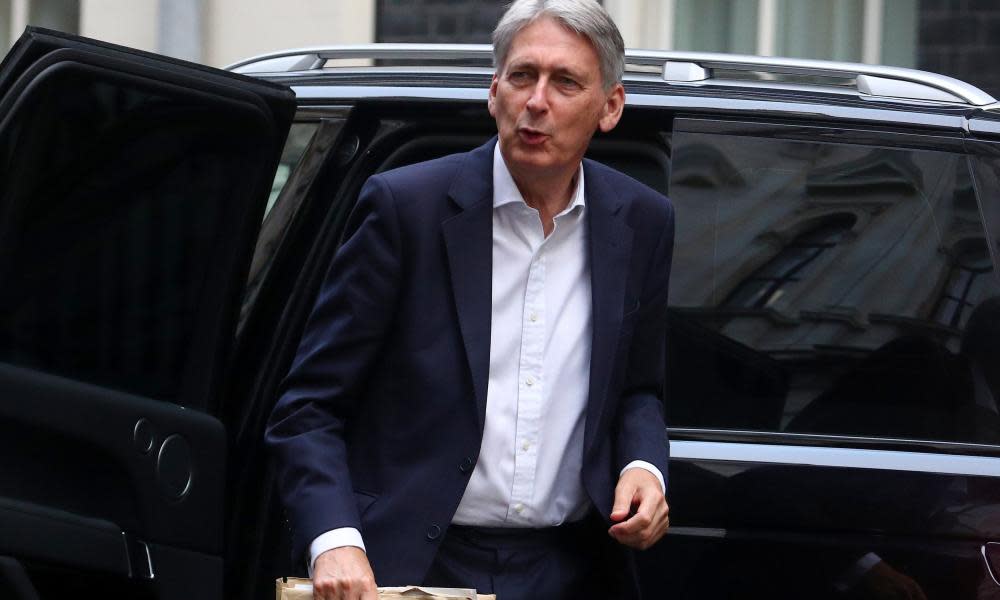Philip Hammond urged to make moves to end austerity

Philip Hammond could make progress towards ending austerity in his budget on 29 October despite opposition from backbench Tory MPs to tax rises and extra borrowing, according to a leading tax and benefits thinktank.
The Resolution Foundation said a freeze on income tax and inheritance tax thresholds before the end of the parliament would raise billions of pounds for public services. Cutting a string of tax reliefs for employers would also improve the chancellor’s war chest as he seeks to pay for increased NHS spending and reverse planned cuts to services.
“The politics of tax rises in Brexit Britain with a government lacking a majority are clearly far from easy but even if the big tax decisions are deferred, the chancellor has options available,” said senior economic analyst Adam Corlett.
“He should make use of some of them, so we can at least begin to answer the question of how public services in the 2020s can be adequately funded.”
Treasury officials are looking for about £100bn over the next five years to meet spending commitments made by the prime minister at the Tory party conference and the pleas of ministers who have seen their departments starved of cash in recent years and face the prospect of further cuts by 2023.
Theresa May said the government would increase health spending by 3.4%, a £20bn boost, in 2023. She pledged to freeze fuel duty and lift the cap on local authority borrowing to fund council house building.
The shortfall in the public finances comes despite a boost since April showing that government borrowing has fallen by 35% compared with the same period last year, handing Hammond almost £17bn.
To boost revenues, it is understood the Treasury is considering a steep reduction in employment allowance, which hands employers a £3,000 reduction in their national insurance bill when they take on a new member of staff.
With the jobs figures showing Britain near full employment, it is expected that the £2bn subsidy, which was brought in by Hammond’s predecessor George Osborne in 2014, will be much reduced or scrapped.
Corlett said the chancellor could cancel a planned cut in corporation tax from 19% to 17%, which would raise £6bn a year by the end of the parliament.
He could also signal a freeze on income tax thresholds. Corlett said: “The Conservatives have promised – but not yet funded – delivery of a £12,500 personal allowance and £50,000 higher rate threshold by 2020. But even freezing those thresholds after hitting those goals could raise significant sums by 2022-23 and 2023-24.”
The thinktank estimates the chancellor could bag an extra £2bn in the first year of the freeze and £4bn in the second year.
Tax rises are off the agenda after Hammond’s plans last year to move towards the equalisation of national insurance between employees and the self employed was killed of by a rebellion headed by Jacob Rees-Mogg. The higher rate of of NI was expected to raise £1.2bn and its defeat spelled the end for further tax raising measures
Further measures could include restrictions to the £2.4bn ‘red diesel’ discount on farm machinery and subsidies for mobile refrigeration.
Higher rate taxpayers could lose out from possible cuts to pension tax relief, which Hammond has described as “eye-wateringly expensive”. The chancellor could reduced the level of relief or less controversially lower the £40,000 annual limit for tax-free saving.
Entrepreneurs’ relief costing £2.7bn a year, the national insurance exemption for working pensioners, which costs £900m and the writing off of capital gains tax at death, which costs an estimated £1.2bn a year could face the axe.

 Yahoo News
Yahoo News 
